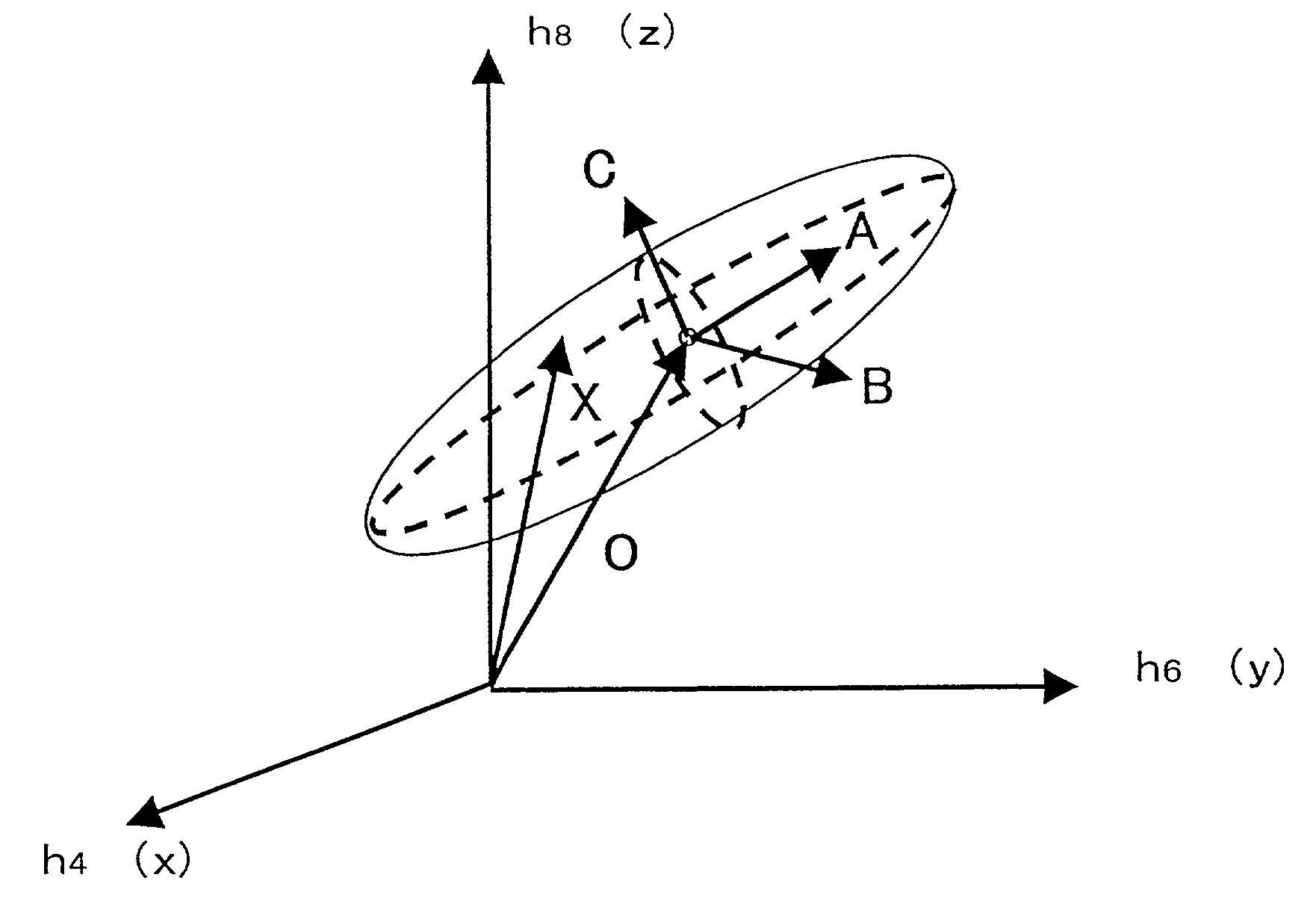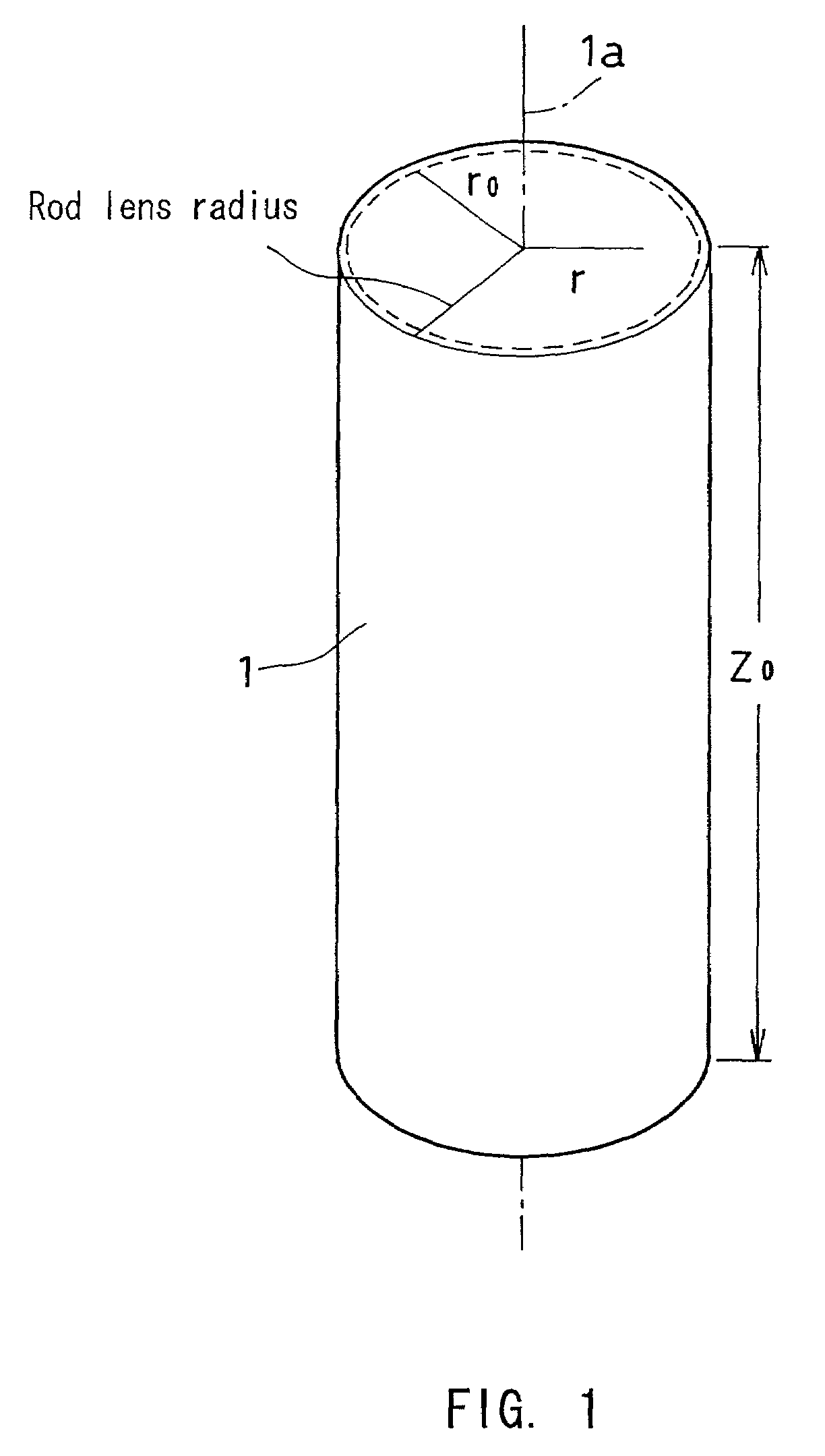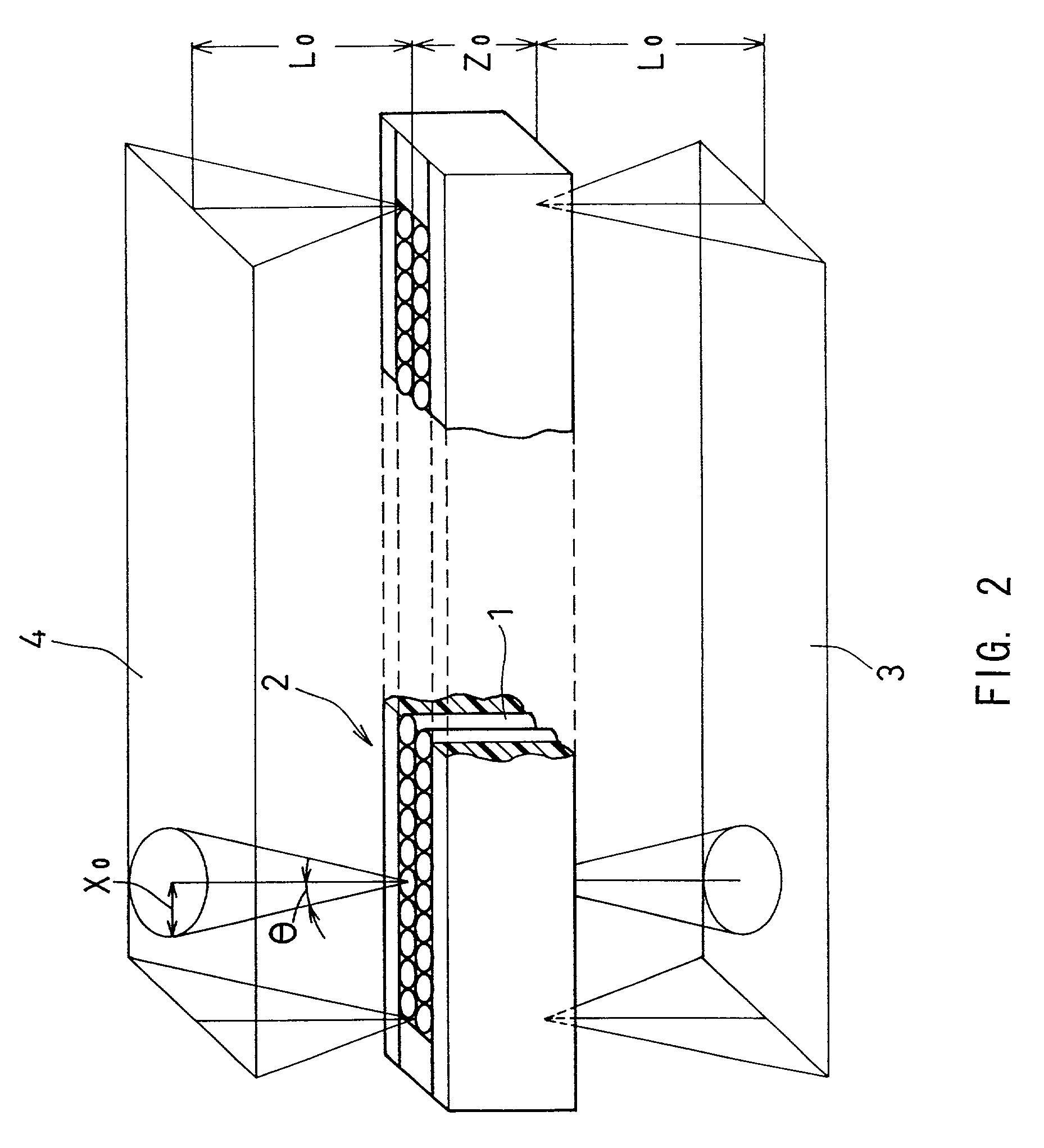Optical imaging system with rod lens array
an optical imaging system and lens array technology, applied in optics, instruments, projectors, etc., can solve the problems of change in resolving power and resolving power, and achieve the effects of reducing cost, simplifying distance adjustment, and increasing periodic irregularity in image plane brightness
- Summary
- Abstract
- Description
- Claims
- Application Information
AI Technical Summary
Benefits of technology
Problems solved by technology
Method used
Image
Examples
Embodiment Construction
[0047]Hereinafter, the present invention will be described more specifically by way of an embodiment.
[0048]As shown in FIGS. 1 and 2, this embodiment employs a rod lens array 2 for one-to-one imaging, where a plurality of columnar rod lenses 1 having a refractive index distribution in the radial direction are arranged in two rows with their optical axes 1a in parallel. A manuscript plane 3 and an image plane 4 are located on the opposite sides of the rod lens array 2, thus providing an optical imaging system.
[0049]As shown in FIG. 3, the refractive index n of the rod lenses 1 is distributed in the radial direction, which is expressed by
n(r)2=n02·{1−(g·r)2+h4·(g·r)4+h6·(g·r)6+h8·(g·r)8} Eq. 13
where r is a radial distance from the optical axis 1a of the rod lens 1, n(r) is the refractive index at the radial distance r, n0 is the refractive index on the optical axis 1a of the rod lens 1 (i.e., the center refractive index), and g, h4, h6 and h8 are refractive index distribution coeffic...
PUM
 Login to View More
Login to View More Abstract
Description
Claims
Application Information
 Login to View More
Login to View More - R&D
- Intellectual Property
- Life Sciences
- Materials
- Tech Scout
- Unparalleled Data Quality
- Higher Quality Content
- 60% Fewer Hallucinations
Browse by: Latest US Patents, China's latest patents, Technical Efficacy Thesaurus, Application Domain, Technology Topic, Popular Technical Reports.
© 2025 PatSnap. All rights reserved.Legal|Privacy policy|Modern Slavery Act Transparency Statement|Sitemap|About US| Contact US: help@patsnap.com



